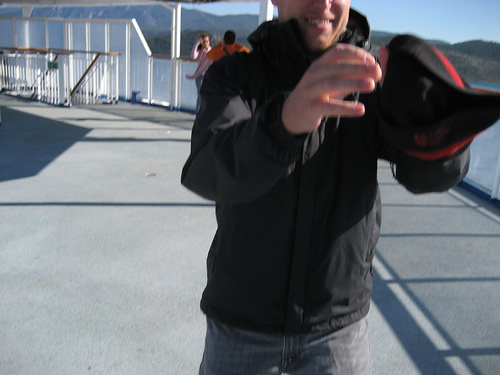Day 3 was all in the field, and rather incredible. I'll start with just the morning.
First thing after the morning meeting at the CoW centre, I headed just a few blocks away through town to a building site behind one of the nicer hotels in Gulu (to say nothing of the hotel quality scale in places like these). Just behind the hotel, there was a flurry of activity surrounded by long piles of stacked bricks.
The Kwiri Pe Lok Building Construction Association is a small, private company in Gulu, run by a smart, well-spoken young man (26! I certainly hadn't accomplished what he had when I was 26!) by the name of Santo Okwera. Okwera runs the company, employing 26 full time local young men and women, about 85% of whom are formerly abducted child soldiers / sex slaves - mostly from the Kitgum and Gulu districts. This was my first direct contact with former abductees, and I saw immediately something in their eyes, or rather, the lack of something - in all of their eyes. The physical evidence was there - a gaping cavity in an arm where a bicep had once been, a massive scar down the side of a neck, and more - it was hard to not stare and wonder. But when they looked at me I could see that there was something missing on the inside, too. I don't know what it is, or how to describe it any better than that. It was just a kind of hollow return of your gaze.
Santo organized the association in 2006 from a number of smaller community groups, and WV worked with him to donate a Hydroform brick-making machine sourced in South Africa. In addition to the 26 full-time employees, he employs day-laborers who show up each morning and are paid on a daily-basis at a lower rate. Due to the variations of the working conditions, he can sometime employ more daily works, and sometimes not. The day I was there, there were probably 15 additional workers to the normal 26.
A Hydroform brick machine runs on a diesel engine, and uses high pressure and water to mold essentially rectangular, fitted bricks out of a sand / cement / sub-soil mix. It pops out the bricks on two sides, at a rate of about one every 20 seconds per side. Problem was, that morning, the oil gasket on the one side was broken, so production was cut in half. While the sand and cement are purchased and brought in, the sub-soil is sourced right there on site, so in addition to those working the brick machines, those stacking the bricks, those building the wall, and those actually mixing the brick mixture on the ground, there were a few in deep, wide holes digging up more sub-soil. The majority, however, were working on the mixing.
This, Santo pointed out, was their main issue - he couldn't produce and build any faster, because so many of the workers (23 of his 26, in fact) had to be devoted fully to the mixing of the brick ingredients. With just one basic cement mixer, that number could be reduced to 5, freeing up 18 people to build the wall (or house or other structure, depending on the project). In addition to that, with a mixer they could produce enough mixture to run the Hydroform machine at full capacity, making 4,000 bricks per day - currently they can only mix enough in one day to produce 3,000. Not only that, the uniform mixing of the machine, as opposed to on the ground with shovels, would produce significantly higher quality bricks, and reduce their current loss percentage.
"How much would a cement mixer cost in Gulu?"
"About 7.5 million shillings."
That's less than $5,000 USD, I thought.
"When do you plan to get one?"
"World Vision doesn't have funds to help us obtain one, so we are saving for it on our own. We should have enough in 1 year to buy one if business keeps up."
One year, I thought. I did some quick math: that would cost me about $15 a day. Which means it would cost 10 people about a buck-fifty a day. Which means it would cost 100 people about 15 cents a day. Or $10 from 500 people, just once. File that one away for later...
Right now 60% of Santo's revenue is spent on salaries, roughly 30% goes towards machine maintenance and supplies, leaving 10% for splitting between the administrative costs and the meager savings they put aside for re-investing in the business (i.e. a cement mixer in a year, buying property and a proper building on it to store the brick machine in, getting trucks for the transport of workers - which they currently have to hire out, etc.). Santo also hopes to get a digital camera in the future so they can take pictures of the completed projects and build a portfolio to market their services to other potential clients. But he mentioned that in passing, as if it was years off in his mind and in their budget. Meanwhile I clicked away on mine. Stupidly. Ignorantly, really.
The good news is that Gulu is growing and the business really is there to be had - at least for the time being. The bad news is that for a good while yet, Santo won't be able to keep up with demand, and in the meantime will be limited in the number of local kids he can provide jobs to.
The Empty House Studio
10 years ago

No comments:
Post a Comment